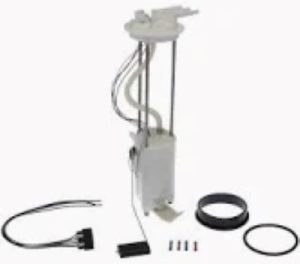Fuel pumps are sure to fail simply through wear and tear, poor quality fuel, lack of lubrication, and electrical malfunctions-all factors contributing to reducing the efficiency of fuel pumps over time. Generally, a fuel pump should last about 100,000 to 150,000 miles, but this often cuts down the duration with continued exposure to harsh conditions and contaminants. These internal parts, such as gears and rotors, will gradually wear down over their lifetime use, increasingly diminishing the pump's capacity as time progresses, to support required levels of pressure, usually between 30 to 80 PSI.
Driving a vehicle on low fuel speeds up the wearing of a pump, as fuel serves to cool down and keep the pump lubricated. If the fuel levels stay this low, below a quarter of a tank, the pump is at risk of overheating. Efficiency may drop by as much as 20%, while in more serious situations, it may seize the pump altogether. For this very reason, automotive experts generally recommend that at least a quarter of a tank of fuel be kept within the vehicle at all times to provide lubrication and cooling for the pump.

The second most common cause of fuel pump failure is the contamination of fuel. Fuel tanks tend to build up a lot of dirt, rust, and other such material over time, all of which can easily block the pump or filter. This means the motor will have to work a lot harder when trying to push the fuel through the system. The increased friction only raises chances of overheating, which would eventually result in a complete failure if the contaminants are gradually building up inside. Replacing the fuel filters after every 20,000 to 30,000 miles avoids blockages and ensures pump longevity by assuring smooth fuel flow without too much stress on it.
Other causes of fuel pump failure include electrical problems such as a weak battery and faulty wiring. A fuel pump requires a constant 12-volt system, though voltage drops, common in the older batteries, diminish its efficiency and its useful life. Even just a slight drop down to 10 volts can cause up to a 15 percent drop in fuel flow, which, over time, places additional stress on the pump. Regular electrical checks and tests of the battery ensure that power supply is sufficient, thus helping the pump avoid part-wear in their early phases.
Poor-quality fuel, especially with high concentration of ethanol, can lead to deterioration in the fuel pump. It is because ethanol is capable of absorbing moisture that leads to corrosion within the pump. In areas where the fuel contains over 10% of ethanol, the life of the fuel pump is reduced up to 30%. Though many manufacturers now make ethanol-friendly pumps which can resist the effects, yet there are additives for fuels that help neutralize the ethanol factor and further expand pump life.
Addressing these factors-fuel levels, filter maintenance, electrical integrity, and fuel quality-can make quite a big deal of difference in longevity and reliability for the Fuel Pump. Furthermore, proper maintenance and mindful usage would avoid the ordinary causes of failure, thereby supporting the fuel delivery continuum with the best engine performance.